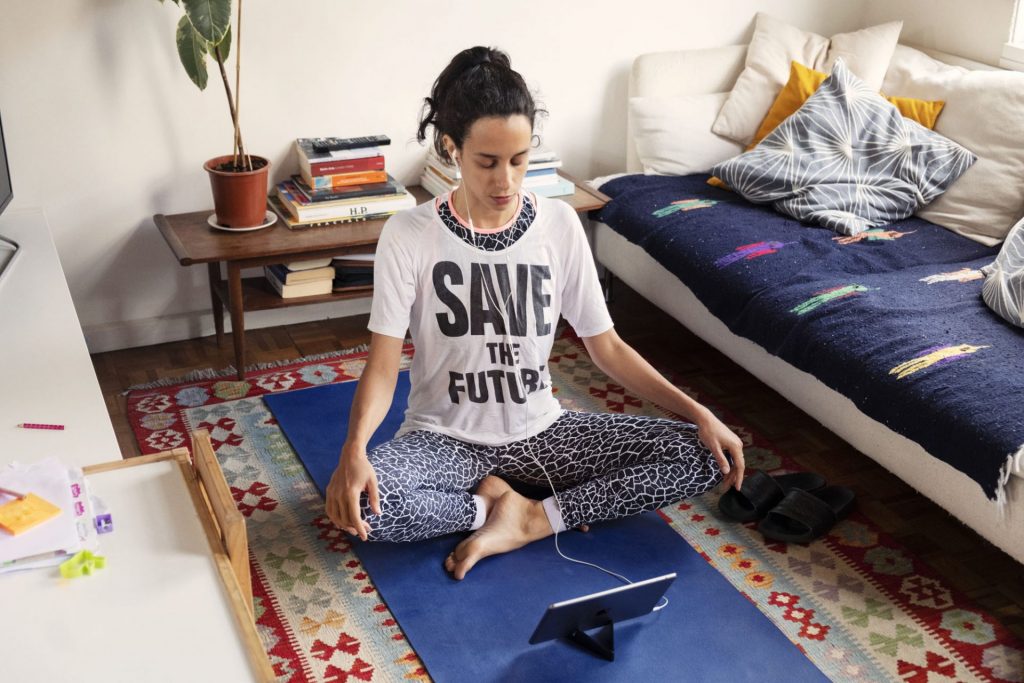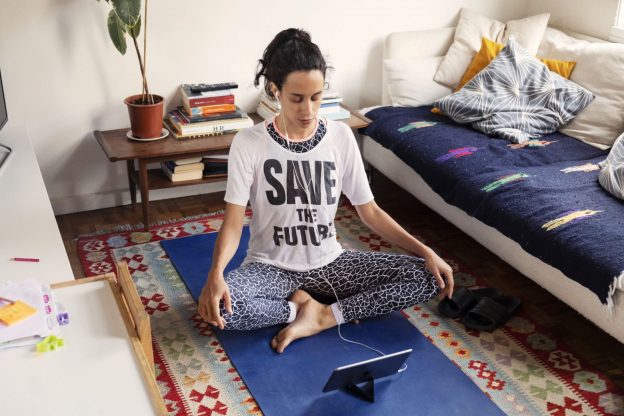
In the second part of her introduction to anxiety, psychotherapist Kelly Hearn examines how to work constructively with anxiety.
Understanding Our Biology
To work with anxiety, we first need to understand the effects it has on our body and how we might work constructively with our nervous system. Anxiety is commonly associated with feeling a lack of control, but when we understand our biology, we realise we have more control than we might have appreciated.
Our autonomic nervous system (ANS) has two divisions, the sympathetic nervous system (SNS) and the parasympathetic nervous system (PNS). We can think of these as the gas pedal and breaks, respectively. We are constantly – if unconsciously – scanning for risks and reacting to threats automatically and instantaneously. When triggered, a small area in our brain called the amygdala sends a distress signal to the hypothalamus. This in turn powers up the sympathetic nervous system, activating our ‘fight or flight’ stress response. In this sense, the SNS is our protector, absolutely necessary and ultimately responsible for our survival.
But our brains are a bit out of date; they haven’t evolved to cope with 21st century technology broadcasting threats 24/7 from every corner of the world. We literally see risks everywhere and our nervous system react to these, igniting a high alert stress response even when our own physical safety isn’t involved. We are bombarded and overwhelmed. No wonder we are an anxious planet.
Read more about yoga for stress and anxiety in this complete guide
Deactivating the Stress Response to work constructively with anxiety
So the stress response is crucial, and yet chronic activation of this survival mechanism impairs our health. We need to consciously apply the breaks: the parasympathetic nervous system. Sometimes called the ‘rest and digest’ system, the PNS helps bring us out of high alert and to restore and conserve energy.
There are numerous ways to activate the PNS, including:
- breathing exercises
- movement (walking and yoga are two excellent ones)
- stretching/relaxing muscles that have tensed up in fight or flight mode
- grounding in the five senses (taking in sights, smells, sounds etc)
- calming touch (massage or self-massage, hugs)
- cold water (perhaps a reason for the wild swimming craze?)
- slow tempo music (‘The Mozart Effect’)
- prayer, meditation, mantras, quiet contemplation
- connection with others – either actual or visualised
Only once we’ve regulated our nervous system are we ready to move to the next phase of working with anxiety.
Wise Investigation
Anxiety can have an important information for us if we engage with it skilfully (a big ‘if’!) Often, we instead fuel it by using words that are catastrophic rather than cautious. And by letting our inner critic run wild with the myriad ways we are ill-prepared. Beware of both pitfalls. As a wise mentor once said to me: ‘Be careful what you say to yourself – remember you are listening.’
Building awareness
The tools of cognitive behavioural therapy can be useful in building awareness around the negative scripts our brains generate, and in challenging these damaging beliefs. I’ll be introducing some exercises to work with these beliefs in the course audios, because often our thoughts only serve to propel the anxiety loop. If we can step out of this, we can look for the valuable insights anxiety may bring such as:
This matters. I recall an actor friend telling me that he gets the same nervous energy others call ‘stage fright’ before the curtains open, it’s just that he views the physical symptoms differently. He sees them as generating the energy he needs to perform, to give his all to a role. Take a moment to recall the physical similarities between what is often labelled anxiety and what could also be called nervous excitement. At times, this energy is present in situations that feel purposeful, of value, and so we are excited. We feel buzzy and alive because this matters.
This needs to change. On the flip side, anxiety can alert us that something in our lives isn’t working any more. There are numerous examples from my client work where an individual arrives with anxiety and when we dig below the surface, there is a pretty clear issue just waiting for attention. A relationship, a job, a way of being in the world that feels out of sync with who they want to be. Anxiety provides the energy to start the process of exploring change, an uncomfortable kick in the rear to get the wheels in motion.
Time to pause. Often, anxiety brings the reminder that we need to slow down, pause, rest. We are a productivity-obsessed culture frequently operating on autopilot. If we don’t course-correct at times, we can end up in burnout, or so far away from ourselves we don’t know whose life we are living. We may intuitively know this but do nothing to change it. Keep calm and carry on. Anxiety can become so uncomfortable it forces us to stop. And in the stillness comes the chance to reconnect with ourselves, an opportunity to build self-awareness. Thank you, anxiety.
Further Exploration in Psychotherapy
There is a lot we can do to manage our anxiety on our own but psychotherapy provides an additional support, to understand where in our personal history anxiety stems from. German psychoanalyst Karen Horney coined the term ‘basic anxiety’ for the feeling a child has of being isolated and helpless in a potentially hostile world. Horney went on to highlight a wide range of adverse factors that can produce this insecurity in a child; insecurities the child then carries with her into adulthood.
Psychotherapy helps us revisit some of these earlier experiences. We realise there is a very understandable reason our bodies learned to be on high alert, and so to have more self-compassion. It allows us to separate out the past from the present and to acknowledge that our conditions have changed. We understand that we have far more knowledge, agency and choice than we ever did as little people confined to our family of origin, home and norms. It allows us to get clarity ‘that was then, this is now.’
The therapy room also gives time and space to acknowledge the many emotions that arise from our earlier experience with fresh eyes. We can allow the sadness or anger or whatever arises to move through. This is important so they don’t remain buried alive, tripping us up in the present.
No Silver Bullet
Anxiety appears for a confluence of reasons: physical, psychological, societal. Accordingly, there is no one ‘silver bullet’ for alleviating the uncomfortable symptoms. But by working compassionately with our bodies, our thoughts, our personal and cultural histories, we can tame what at times may feel like an unruly beast. Get to a place of greater self-awareness and acceptance. Understand we can’t control what comes, but develop the confidence that we have the ability to weather even the most turbulent, uncertain times.
Read more in Yoga for Stress and Anxiety: A Complete Guide
Join Kelly Hearn for a workshop on 9 November at 7pm to explore grounding for uncertain times. Read more or book now.
This is the second of a two-part series on anxiety by Kelly Hearn. The first part is an introduction to working with anxiety.
Kelly Hearn, Psychotherapist and Co-Founder of Examined Life, trained at the Centre for Counselling & Psychotherapy Education (CCPE) in London and is a registered member of the BACP and UKCP. She has wide experience working within the NHS, private practice and at The School of Life. Kelly co-founded Examined Life, a collective of psychotherapists, in 2020. She is also an avid ‘sanity walker’ and yogi.






Leave a Reply